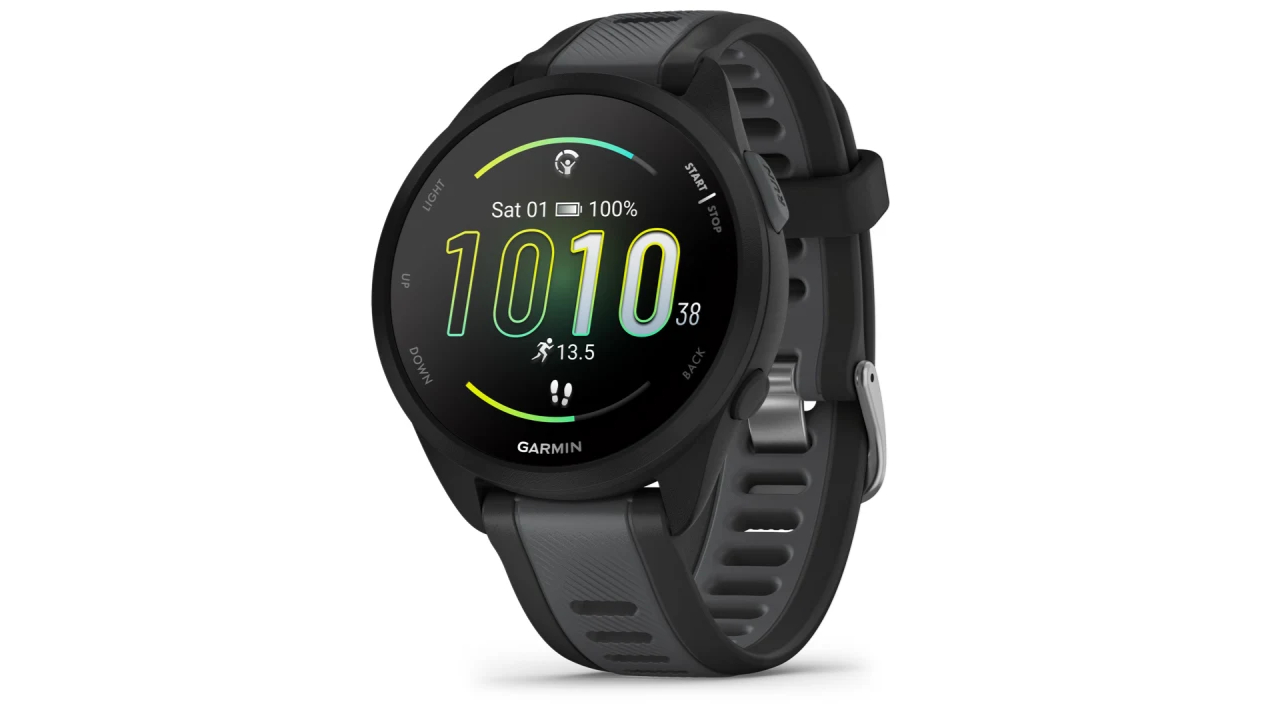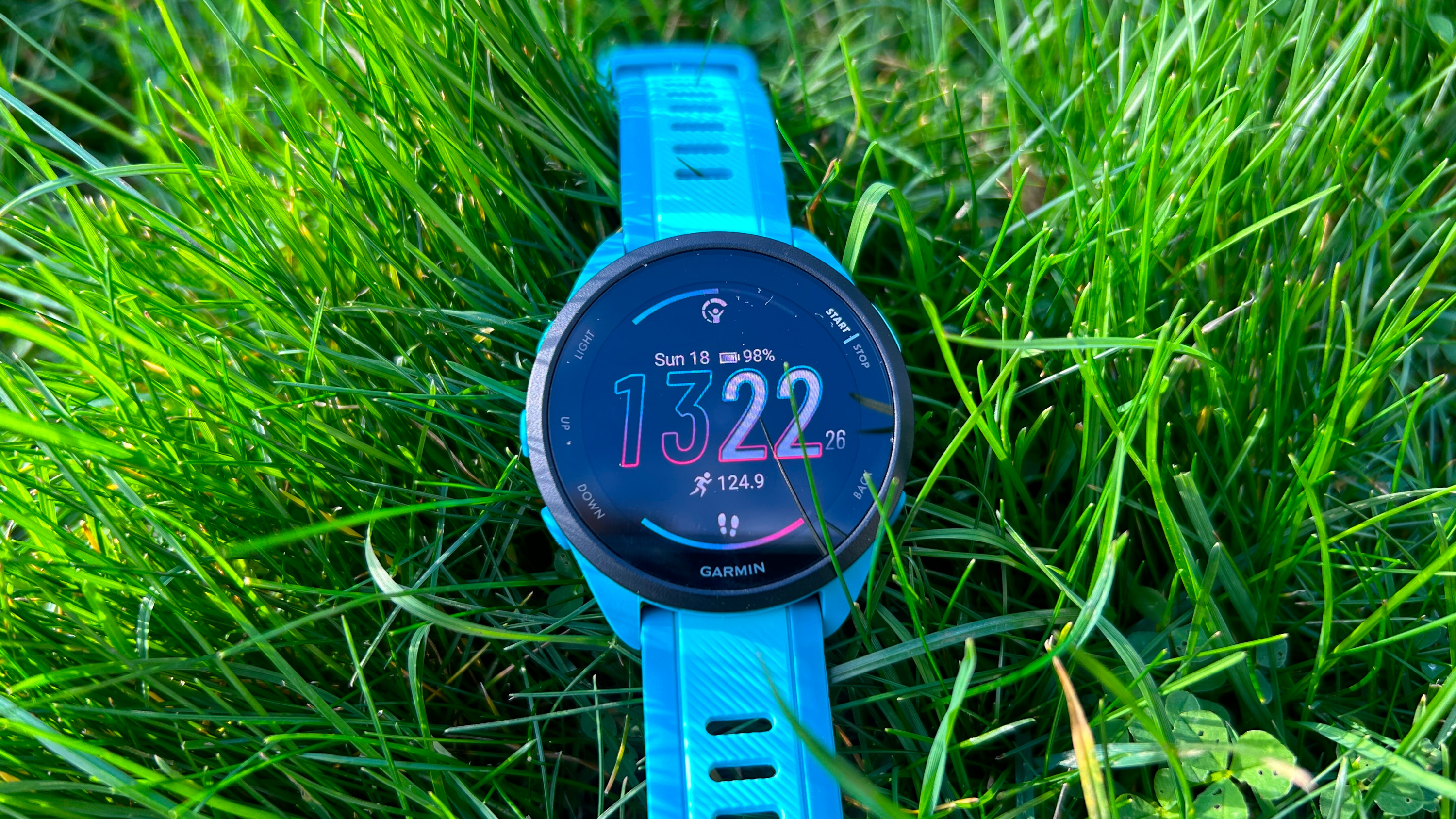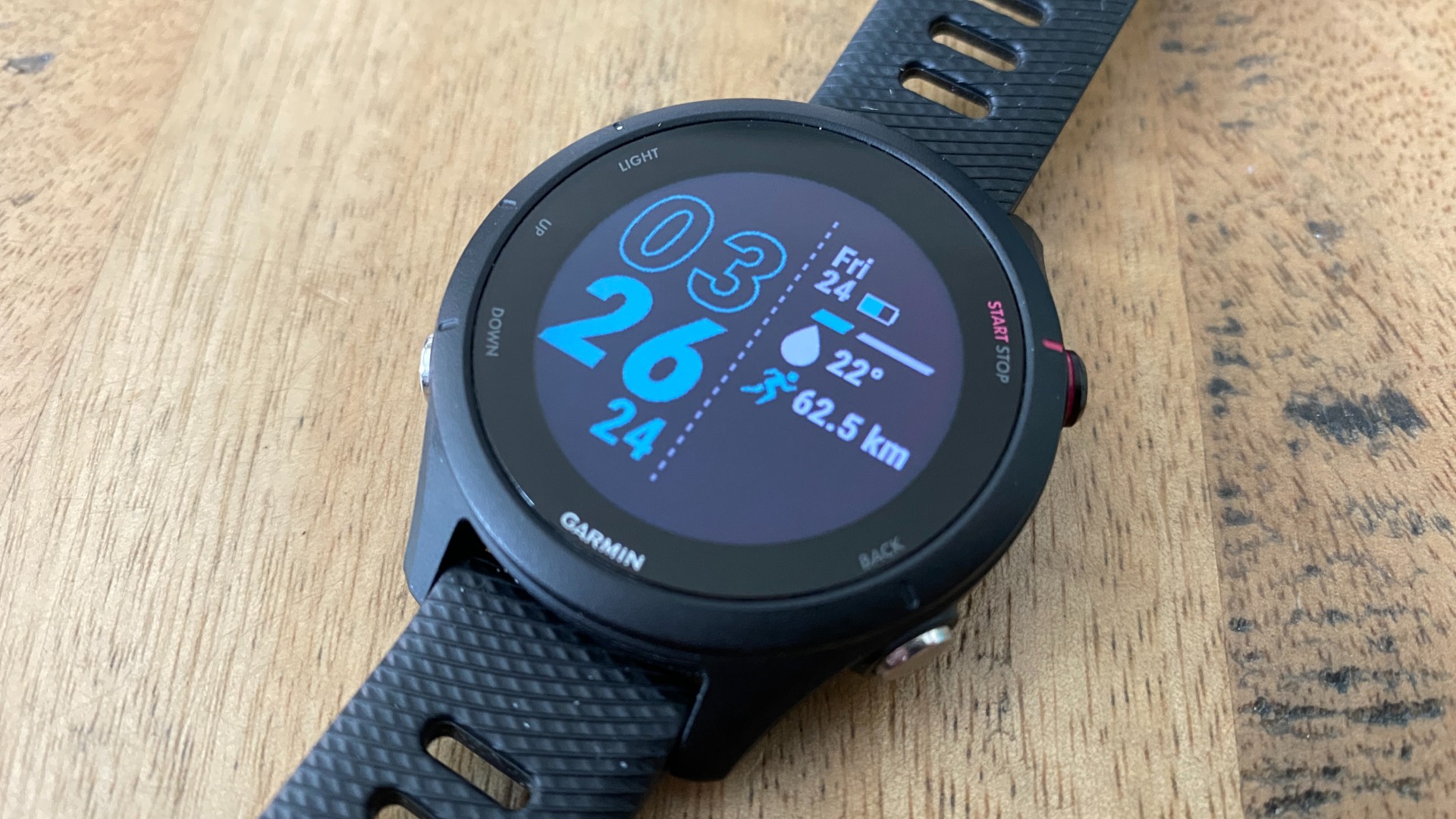Garmin Forerunner 255
The Forerunner 255 is an older device but still one of the best sports watches for triathletes. It’s more expensive than the Forerunner 165 on list price but it’s often reduced and has more features—if not the vibrant AMOLED screen of the 165.
For
- Multi-band GPS
- Triathlon mode
- Two sizes
- Long battery life
Against
- LCD screen
- More expensive list price

The Forerunner 165 is Garmin’s entry-level AMOLED sports watches, and is aimed at runners. It looks great and tracks accurately, though it lacks a few features you get on non-AMOLED devices at its price.
For
- AMOLED screen
- Cheaper list price
- Same smart features
Against
- Not a multisport watch
- Limited training analysis
- No dual-band GPS
The Forerunner 255 and Forerunner 165 are among the best sports watches and offer better value than most devices in Garmin’s range. The Forerunner 255 is a full multisport watch with more training analysis features than the Forerunner 165, which is cheaper and has a bright AMOLED display as its star feature.
Forerunner 255 vs Forerunner 165: Price And Availability
The Forerunner 165 launched in February 2024 and there are two models: the 165 Music and standard 165. The Forerunner 165 is $249.99 in the US and £249.99 in the UK, and the Forerunner 165 Music is $299.99/£289.99.
There are also music and non-music models of the Forerunner 255, which launched in June 2022, and they come in two sizes. The Forerunner 255 is $349.99/£299.99 and the Forerunner 255 Music is $399.99/£349.99, with the smaller 255S variant available at the same price with both models. As an older watch, however, the Forerunner 255 is usually available for much less than its list price.
How I Tested These Watches
I tested the Forerunner 165 Music and Forerunner 255S Music for my reviews on Coach, using them for several weeks to track my workouts, general activity and sleep. I usually run 50-80 miles a week, as well as doing regular yoga and some strength sessions and bike rides. I tested the watches for heart rate accuracy against a Polar H10 chest strap and for GPS accuracy against the Garmin Epix 2 or Garmin Epix Pro, both of which I’ve found accurate for GPS distance and pacing.
Design

The main difference in design is obvious as soon as you look at the two watches. The Forerunner 165 has a 1.2in AMOLED display while the Forerunner 255 has Garmin’s traditional memory-in-pixel LCD (1.1in on the Forerunner 255S and 1.3in on the Forerunner 255).
I prefer the AMOLED display, which is more vivid and easier to read inside and when under tree or cloud cover. In bright sunlight the screens offer equal visibility, though overall the AMOLED is superior—making the Forerunner more engaging and enjoyable to use as a general watch, outside of training.
The Forerunner 165 comes in only one size, with a 43mm case. The Forerunner 255S has a 41mm case, and the Forerunner 255 a 46mm case. Both watches have a plastic build, but the screen is stronger on the Forerunner 255, using Gorilla glass, whereas the Forerunner 165 features chemically strengthened glass.
The watches have the same sensors, including a barometric altimeter, and use Garmin’s Elevate V4 heart rate sensors. They can connect to external sensors using Bluetooth and ANT+, but the Forerunner 255 can connect to cycling power sensors, something that isn’t available on the more running-focused Forerunner 165. The Forerunner 255 also provides more accurate dual-band GPS tracking, which isn’t available on the Forerunner 165.
Sports Tracking And Training Analysis
The Forerunner 165 tracks a range of sports, including open-water swimming and the other parts of a triathlon individually, but it doesn’t have a multisport mode where you can record a full triathlon, including your transition. It’s more of a running watch, while the Forerunner 255 is a full triathlon watch.
You can also display more information during activities on the Forerunner 255, which allows up to six data fields at once on screen, whereas the max you can show on the Forerunner 165 is four. The Forerunner 255 offers more analysis, including Garmin’s training status, which provides insight into whether your training is balanced and productive. Both watches lack the Forerunner 265’s training readiness feature.
You do still get some useful training insights from the Forerunner 165, which will tell you how your workouts benefitted your aerobic or anaerobic fitness and give a VO2 max estimate, plus estimated race times for 5K, 10K, half marathon and marathon events.
GPS And HR Accuracy

One big difference between the watches is that the Forerunner 255 offers dual-band GPS tracking, whereas the most accurate mode on the Forerunner 165 is all-systems-on, which uses multiple satellite systems at once. In my testing the GPS accuracy of the Forerunner 165 was good and mostly comparable to that of the Garmin Epix Pro. However, dual-band tracking on the Forerunner 255 is more reliable when in tough GPS conditions, such as when running under tall buildings or tree cover. It reduces battery life, though, and the accuracy of the Forerunner 165 is good enough to judge your runs.
The optical heart rate accuracy was comparable across the watches, which is to say it’s not something I’d rely on entirely. It was mostly OK, especially in warm conditions, but I often saw heart rate readings that were incorrect when compared to a chest strap. If you’re intending to use heart rate in workouts, or to use the training analysis on the watches to shape your training plans, I’d link one of the best heart rate monitors to the watches for peace of mind.
Battery Life
The difference in battery life isn’t huge, especially if you set the 165’s screen to raise-to-wake rather than always-on, though the standard Forerunner 255 is the longest-lasting watch in watch mode and during activities. The smaller Forerunner 255S still slightly outlasts the Forerunner 165.
With the screen always-on I found the Forerunner 165 lasted four or five days when running daily, while the smaller Forerunner 255S lasted six days on a charge.
| Header Cell – Column 0 | Forerunner 165 | Forerunner 255 | Forerunner 255S |
|---|---|---|---|
| Watch mode | Up to 11 days | Up to 14 days | Up to 12 days |
| GPS Battery Life (all-systems-on) | 19 hours | 25 hours | 20 hours |
| GPS Battery Life (multi-band) | N/A | 16 hours | 13 hours |







